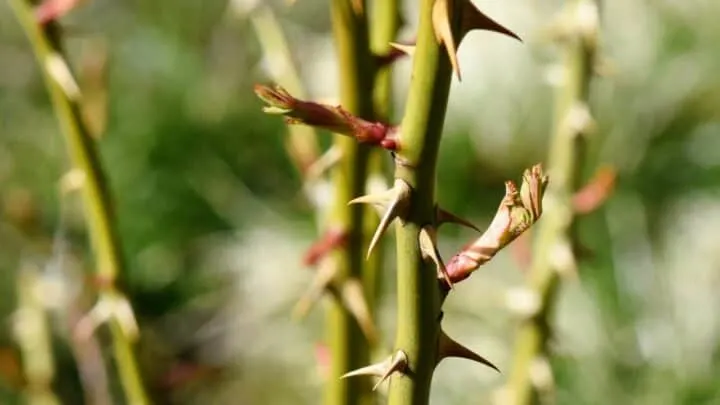Why Do Roses Have Thorns? I discuss what roses and other plants use thorns for in this article.
Picking a rose flower can be a challenging task for its admirers. You need to avoid being pricked by the numerous thorns in just one stalk of a rose flower.
If so, why is it that roses have thorns?
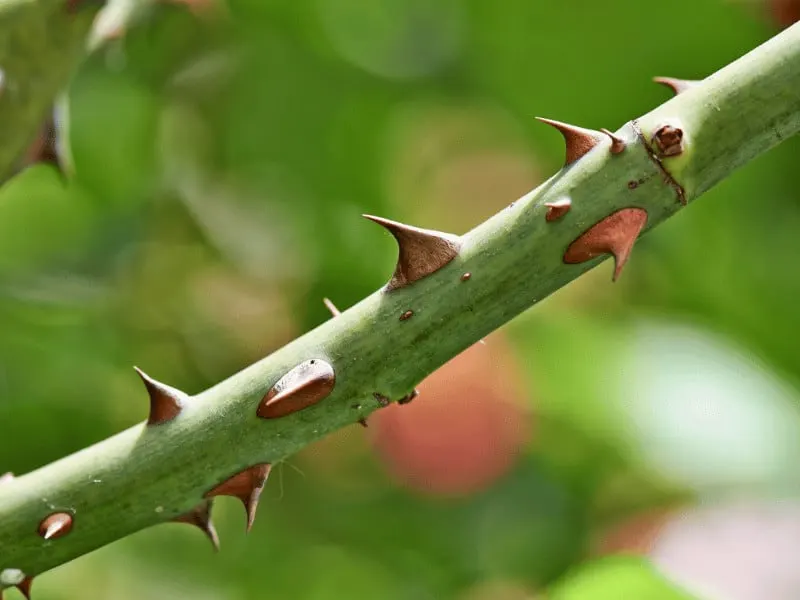
Table of Contents
Why Do Roses Have Thorns?
Roses have thorns to protect themselves from bugs, animals such as deer and rabbits, and humans. Thorns keep any intruders away. In addition, roses use thorns to hold onto other plants and objects and are used for photosynthesis.
But there is more to know…
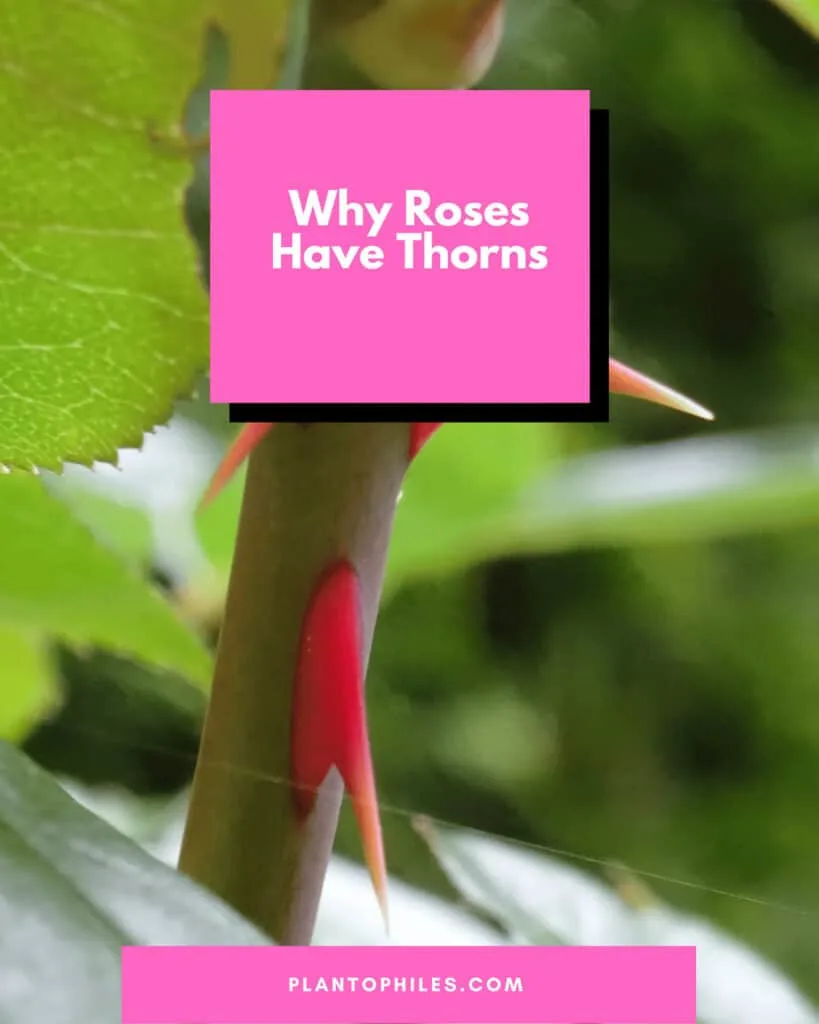
Understanding More About Roses and Their Thorn-Like Appearance
Various plants have sharp protrusions, according to Love to Know, protecting them by keeping the intruder away. Out in the wild world, every species struggles to survive.
Roses have numerous predators preying on them.
These predators attracted by roses can be bugs who seek to suck their sap.
Deer or rabbits who long to munch the sweet flowers. Humans who want to pick a few stalks, savor their aroma, and present them as symbols or tokens of love and appreciation for their beloved.
Roses had to develop a way to protect themselves and survive from all these predators. They came up with thorns, the painful pricking monsters among the beautiful roses!
The thorns keep unwanted predators at bay.
The contrasting combination of thorns and roses is critical to the survival of roses, especially those that grow in the wild, lacking the gardener’s tender care.
The thorns protect and adapt the flower for maximal chances of survival.
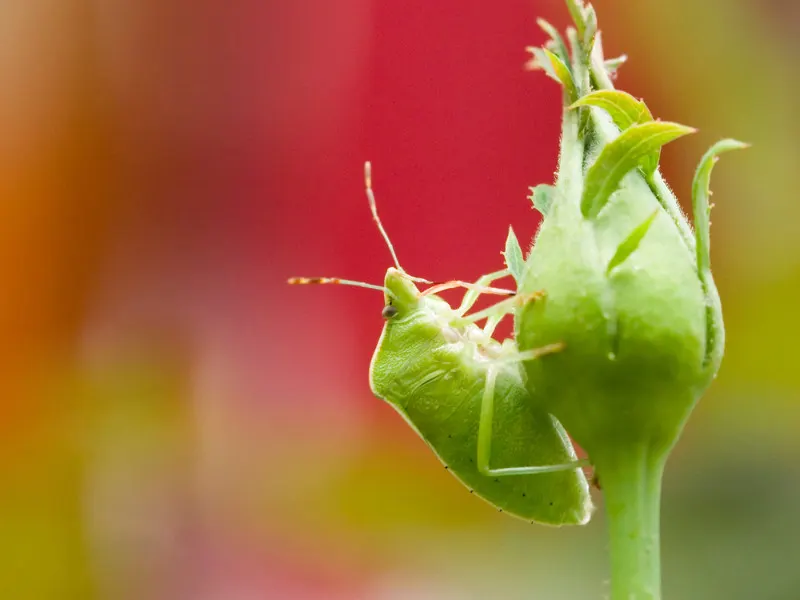
Rose Thorns
The pointy flanges that grow on the stalks of rose flowers are thorns, right? Wrong!
For botanists, there are not just thorns but prickles. The sharp protrusions on plants could be thorns, spines, or prickles.
Plants like hawthorn have thorns, firm extensions of the shoots with internal tissue connection, and thus hard to pluck them off.
Plants like Dracaena have spines close to thorns but are modifications of leaves instead of shots.
Prickles, as such in roses, are outgrowths of the bark of the stem and have no internal tissue connection to the plant, thus easy to pluck.
Allow me to continue calling rose prickles thorns for the sake of this article, but in the back of our minds, we know we mean prickles, right?
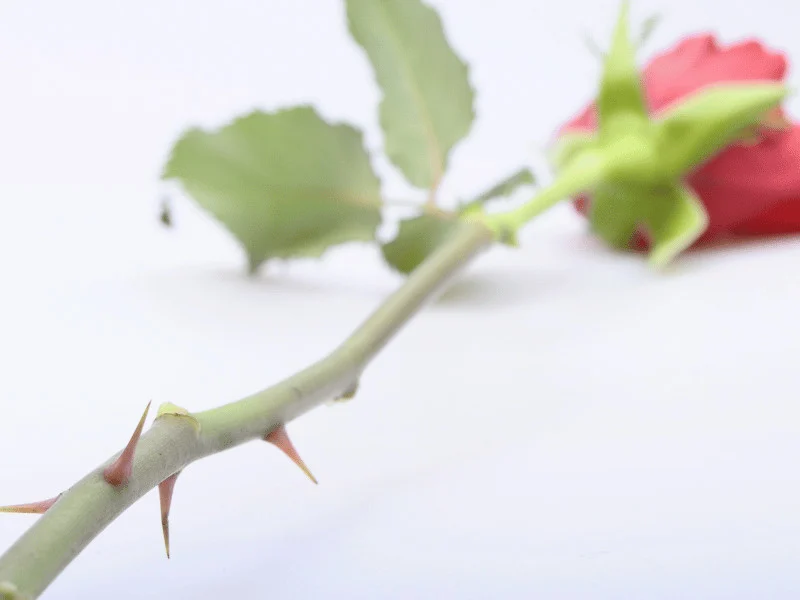
How Thorns Protect Roses
The ancient Chinese saying, “A thorn defends the rose, harming only those who would steal the blossom,” sums up the reasoning for the need for thorns to grow among roses.
Native Americans have mythical stories that explain why roses have thorns, and botanists have scientific reasons for the same.
These diverse thoughts are all skewed toward protecting the rose flower from predators. The thorns discourage predators from getting to the beautiful buds.
To get to the flower, one must brave the thorns’ pricking.
How Thorns Help Roses Survive
Besides the role of keeping away the predator, thorns also help the rose plant survive in other ways. The sharp bulges on the stalk of roses grow to almost 0.39 inches (10mm) long. The thorn is arched downwards.
Each provides a grip on the surface of other plants as the rose flower grows, thus getting support from other plants. The rose will then grow in the direction where there is more sunshine.
The sharp extensions on the bark of rose flower stalks also serve another vital function.
They increase the plant’s surface area on which sunshine reaches for photosynthesis. Photosynthesis is simply the feeding process for plants.
Thorns help the rose flower plant make more food necessary for its growth.
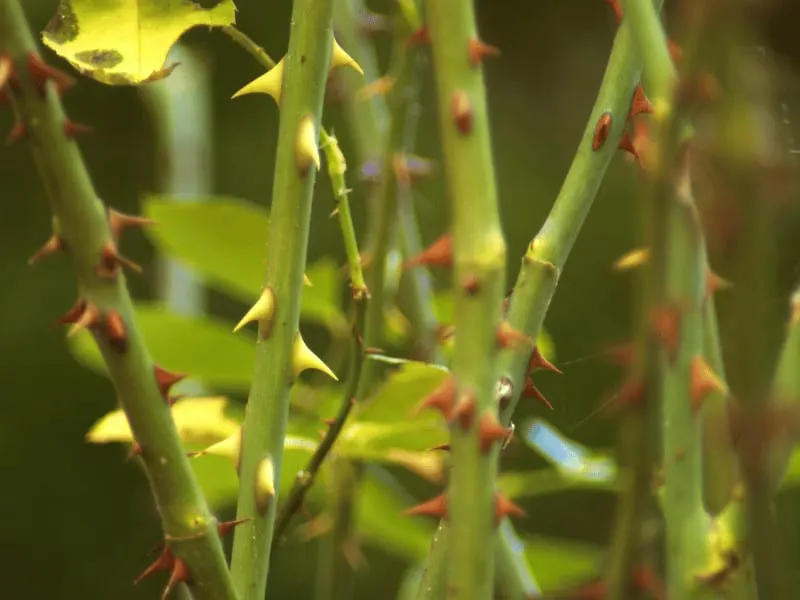
FAQ
Why are thorns in roses curved downward?
The thorns in roses are curved downward to discourage insects from crawling upwards to eat the leaves and buds. The thorns take this form to help the flower hook on the surface of other plants, especially for the climbing kinds of roses. The downward direction of the curve of the thorns draws water droplets directly to the root. It is helpful with directing dew droplets straight to the root of the rose plant, especially during dry seasons.
Do all roses have thorns?
Not all roses have thorns. Vigorous breeding of rose flowers has resulted in different variations of the rose flower, with some types of roses having very few thorns on one stalk and others with no thorns at all. Pricks from these thorns may lead to infection, especially for people with compromised or underdeveloped immunity. The thorn-less varieties of roses are fit for gardening by the elderly or households with children.
Should thorns be removed from roses?
To avoid the incidents of thorn pricking, one may remove thorns from the stalks of the roses. Surely no one would wish their loved one to be pricked by presenting them with a bouquet of roses full of thorns. However, when removing the thorns, take caution not to injure the skin of the stalk, as such injuries reduce the quality and life span of the flower.
Why do roses have thorns quote?
We can complain because rose bushes have thorns or rejoice because thorn bushes have roses. Abraham Lincoln
Why do roses have thorns myth?
It is that the thorns were arrows from the bow of Cupid. The rose is linked to Venus, the goddess of love in Roman mythology. Venus gave a rose to Harpocrates. Harpocrates is the god of silence. It was an exchange for discretion about her affairs.
Why do roses have thorns on their stems?
Roses have thorns on their stems to protect the flowers, to hold onto other plants and objects to climb, and to photosynthesize.
Are there roses without thorns?
There is one rose variety called Zepherine Drouhin that does not produce thorns. Thornless roses evolve through chimeric mutations.
The Last Thorn
Roses and thorns are necessary for roses to thrive. The thorns protect the roses from predators, and this is why roses have thorns.

Daniel has been a plant enthusiast for over 20 years. He owns hundreds of houseplants and prepares for the chili growing seasons yearly with great anticipation. His favorite plants are plant species in the Araceae family, such as Monstera, Philodendron, and Anthurium. He also loves gardening and is growing hot peppers, tomatoes, and many more vegetables.

